
Singaporean mamas are doing amazing things all over the world! Today we speak with mama of two Maeve Tan in Genoa, Italy about raising trilingual kids
For Maeve Tan, the decision to be a stay at home mom (SAHM) was both the result of moving out of Singapore for the foreseeable future and a shared belief with her husband that it is the best arrangement in view of their priorities regarding their children. She tells us more about life as a SAHM in Genoa, the capital of northwest Italy’s Liguria region, and how she is striving to raise her children to be trilingual – in English, Mandarin and Italian.
Click here to read about more Overseas Mamas!

Can you tell us a little about yourself?
Over seven years ago, I made the decision to take on one of the most difficult yet important jobs in the world – to be a stay at home mom (SAHM) to my daughter. The years seemed to fly by and I am proud and happy to be a mother of two amazing children today. My daughter is seven years old and my son is three years old.
In my free time – which unfortunately, for the last seven years, hasn’t existed for more than a few precious minutes – I used to (and would like to one day again) go for a run, indulge my inner movie buff, listen to my favourite music at high volume, practise yoga, dance the Argentine tango, meditate, and most of all, read for my own pleasure and finish a book before so much time passed that I’d forgotten what I had read in the previous chapter.

What brought you to Genoa, Italy? How long have you been living overseas?
Love! My husband is from Genoa, and before marriage, we knew that it was very likely that I would move here to be with him eventually, as we do not believe in being apart for long periods of time in a marriage. During the first year of our marriage, which was also when I was pregnant with our first child, he was based in Perth, Australia for work with occasional short stints in Singapore so I didn’t have to make the move then. We moved here at the end of 2012, when my firstborn was one year old, so it has been about seven years to date.
Favourite aspect of living in Genoa?
It’s a tie between the access to authentic Italian food and the varied climate. Genoa is situated along the northwestern coast of Italy, facing the Mediterranean Sea and with the Apennine Mountains behind. It is this particular geographical setting, combining four seasons with a temperate climate, which provides easy access to fresh local produce, be it seafood, fruit, vegetables or meat.
And the worst part?
Being away from my family and friends in Singapore. We are on our own here in Genoa without family support as my husband comes from a small nuclear family. His extended family lives in other parts of Italy.
As for integrating into the local community, Italy is a relatively monolingual and mono-cultural country as a whole. The Genoese specifically are generally reserved persons by nature, and it takes time for the average local to trust or open up to you before they accept you as part of their demographic landscape. Note that I have described it as ‘part of their demographic landscape’ and it is not to be interpreted as friendship, which would probably take at least a decade or two to build.

Your most recent purchase:
… for your children?
Winter clothes, including outdoor snow apparel for our vacation in February at a popular family ski village nearby.
… for yourself?
Does chocolate count? It’s no secret that I am a die-hard chocoholic.
How do you think parenting in Genoa differs from parenting in Singapore? What do you appreciate most about it?
Parents here are less obsessed with academic excellence. They value experiencing nature and the outdoors with their children, like going to the seaside, the countryside or the mountains during the various long weekends or festive holidays throughout the year.

Did you give birth to your children in Genoa? If yes, what was memorable about the experience?
No, for my first child, we were still residing in Singapore. As for my second child, even before we decided to try for a second child, we had already agreed that I would deliver our future child in Singapore so as to have adequate support from my family and friends as well as be taken care of by my trusted obstetrician-gynaecologist whom I have known since my early adulthood years.
Can you talk us through your career pre- and post-baby?
In my ‘previous life’ – an affectionate nickname I give to my life pre-motherhood – I was carving out a career as a marketing and brand management professional in the consumer goods industry. Post-baby, I took on the full-time job of being a multi-tasking, goal-oriented, all-in-one service provider and caregiver to one little Very Very Important Person (VVIP), although it has since expanded to become two VVIPs.
Most recently, I have started to take on ad-hoc freelance translation and transcription projects across three languages – i.e. English, Chinese and Italian – and I hope the projects won’t take up too much of my time and energy away from my husband and children.

Favourite kid-friendly restaurant in Genoa?
We don’t really have a favourite but if you are referring to service, ambience and food menus, many restaurants are always happy to accommodate children and families. Italians generally like children and won’t hesitate to show their affection and kindness to the young ones in public spaces.
However, many restaurants are not equipped with diaper-changing facilities so it can be a challenge to dine out frequently if you have a baby or a recently toilet-trained toddler. That being said, some international restaurant franchises such as American burger chains and the restaurant at IKEA know the importance of child-friendly bathrooms so they are on our list of favourite places to eat at.
Top five places in Genoa you would recommend to parents travelling with kids?

- Acquario di Genova: Genoa is very proud to claim that its aquarium is the largest in Europe, and I’m sure many parents agree you can’t go wrong with an entertaining and educational visit to the aquarium.
- Museo di Storia Naturale: I was very impressed by this museum where children get to see preserved specimens of real animals. My older child and I enjoyed it very much when we first visited it years ago and have gone back many times since.

- Città dei Bambini e dei Ragazzi: A science and technology centre for children from 2 to 12 years old to explore, interact, and learn about science and technology through play. This is an excellent indoor option for parents to while away a few hours as there is plenty of safe space for children to move around freely by themselves.
- Bigo Panoramic Lift: An aerial panoramic view of the city is usually on every tourist’s list of must-sees and this could be interesting for families with older children.
- Parchi di Nervi (including Passeggiata Anita Garibaldi): This itinerary itself could easily take up a whole day and is a must if you wish to escape the urban landscape and bring your children closer to greenery and the sea. The museums in the park are also worth a visit for contemporary art lovers.
Any advice for surviving a flight with young children?
The standard advice as wisely passed on from one mother to another: a change of clothing, snacks, books (story books and activity books such as ‘busy-books’), doodling materials, small toys and comforting objects for the little ones.
My secret weapon is to prepare a small secret gift each flight, such as a storybook or a small toy that I know my children will like, to be used as my trump card and as a last resort for extremely cranky or difficult moments. Note that I’m not saying this out of patriotism nor is this a paid endorsement, but I have to say that Singapore Airlines’ in-flight entertainment system is always a winner in keeping my older child out of my hair for the entire duration of the latest animation film or family movie!

Is there something that you do to keep your children in touch with their Singaporean roots?
It is a variety of little things for us. Firstly, my children are verbally trilingual in Italian, English and Mandarin, and can code-switch between the three languages with ease. One of their code-switching modes includes their ability to speak with that authentic, unmistakeable Singlish accent and having some basic Singlish vocabulary in their spoken repertoire.
We frequently video-call my Mom, whom my children are very close to despite the distance and time apart. We also try our best to visit Singapore for about two to three weeks every one or two years, even if it may not coincide with Chinese New Year. Being Singaporean also means that enjoying good food is important to us. Whenever we are back in Singapore, the children are introduced to hawker food and flavours as I make my rounds eating whatever I have missed abroad.
Best souvenir one could bring back from Genoa
For a child?
Made-in-Italy Nutella. Nutella tastes so much better in the country where it was invented. I say Nutella only because the brand has become synonymous with the product itself. Actually, we have done a taste test of several local brands and our favourite chocolate hazelnut spread is the one by Novi.
For a mama friend?
I would say the same thing. Other ideas include personal care products and affordable make-up items from various Italian brands. As you can see, when it comes to gifts, I am quite pragmatic and prefer to give (and receive) something that can be eaten or used.

What do you find is the hardest part of being a mother living in a foreign country?
As that famous proverb says, it takes a village to raise a child. The hardest part for me was the feeling of isolation and not having my support network. Being an extrovert, I have a fairly large network of friends and acquaintances from different walks of life in Singapore, spanning different age groups and life stages.
Upon moving to a foreign country, in this social aspect, everything gets reset to zero. As much as I wish to build a new ‘village’, given the differences in culture, language, personal parenting style and other variables that influence the foundation of how relationships are built, the resulting sample size of suitable persons for my new ‘village’ is very much smaller when compared to Singapore. As I’ve mentioned previously, people in this city take years to open up, so you could probably tell how successful I am so far in building my ‘village’ after six years.
On raising multilingual children…
I am effectively bilingual in English and Chinese. My husband is also bilingual, in Italian and English. After all these years of living in Italy as a SAHM, I have a basic, survival level of Italian while my husband still cannot understand Mandarin. Our language goals are to raise our children to be trilingual in Italian, Chinese and English as all three languages are integral in defining their roots and heritage.
Strategy-wise, we practise what I call the ‘relaxed’ one person-one language (OPOL) approach. I speak to my children predominantly in Mandarin while my husband speaks to them in Italian. I read to my children usually in Mandarin, frequently enough in English and less frequently in Italian. My husband reads to them mainly in Italian and sometimes in English.

Between us, the parents, we communicate in English as it was the language from our courtship days and became inevitably the language in our daily lives. Through this passive exposure, the children have a good passive understanding of English and are slowly gaining confidence in using it.
I am very much relieved and encouraged whenever we are back in Singapore and family and friends commend on the children’s ability to speak and understand Mandarin. I have recently started to teach my older child, currently in her second year of primary school, how to read and write some Chinese characters. Unfortunately, we have been making slower progress than anticipated as she does not have a lot of spare time left after school, homework time, reading and playing.
Nevertheless, my motto remains: I will do what I can to take their Chinese learning as far as we can each stretch ourselves. For anyone interested to know more about my family’s language-learning strategy, I’ve written a guest post on a mommy friend’s website here.
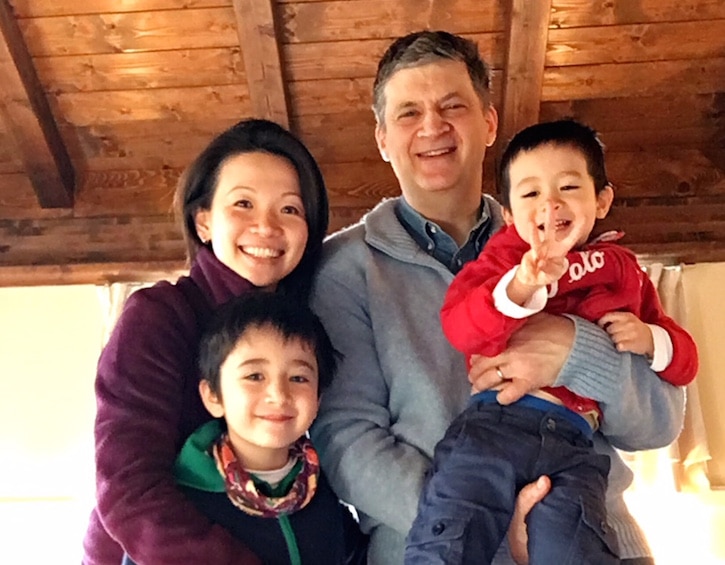
What do you always bring back from Singapore for yourself and for your children?
In recent years, the priority in our luggage space always goes to Chinese books, mainly from Popular Bookstore, and DVDs of movies for the children. We choose to buy DVDs in Singapore as the ones sold in Singapore have the option of switching the movie’s language audio to Mandarin.
Also, very importantly, we always bring back pyjamas for the children made by my maternal grandmother, now in her eighties, who used to be a part-time seamstress in her younger days. These are so precious as how many children nowadays could boast of owning pyjamas made by their great-grandmother by hand with a non-electric, manual sewing machine?
Your top makeup tip for a busy mama?
Groomed brows, a good eyeliner pencil and tinted lip balm to help me look less tired than how I really feel, coping with the everyday demands of caring for two young children without any help at all.

Tell us about your go-to recipe for your family:
The quintessential nourishing soup many Singaporean Chinese families often have in their home-cooked dinners. My children prefer the chicken or pork-based ones to fish-based recipes. My husband will drink some, maybe just a small bowl, and he is always amazed at how the children ask for so many servings! Leftover soups – there usually isn’t much left as the children slurp up almost every drop – are refrigerated to make porridges and noodle soups the next day – or even used in steaming white rice to give the rice additional flavours.
What’s the one thing you would miss about Genoa if you moved away?
The food! Food from Genoa and the region such as pasta al pesto, foccacia, farinata and canestrelli are firm favourites for all of us in the family. If we move out of Italy one day, we would definitely miss good Italian coffee and yummy gelato at affordable prices.
Read about more Singaporean mamas abroad:
Cherh Kah Leng in Taiwan
Jolene Sng-Ong in Houston, USA
Global Adventurer Nellie Huang

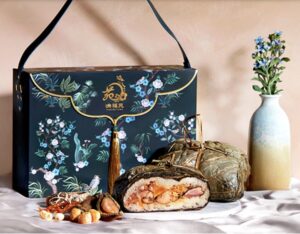
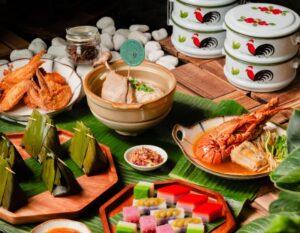

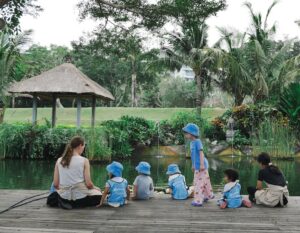

 View All
View All




 View All
View All

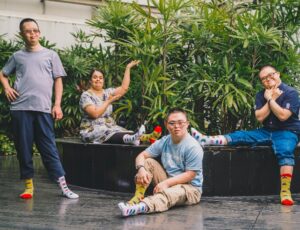
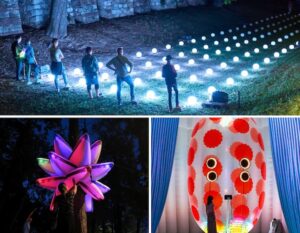


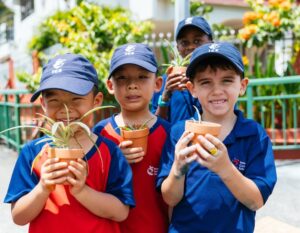
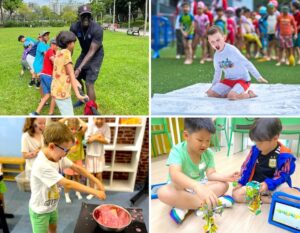
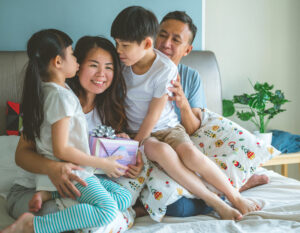

 View All
View All








